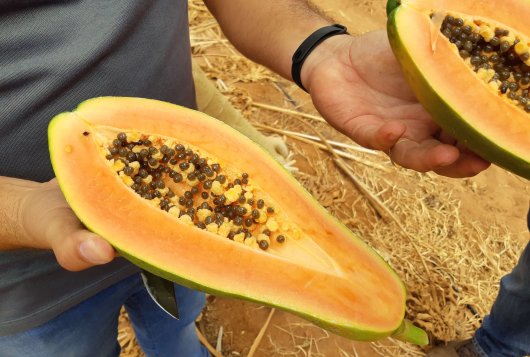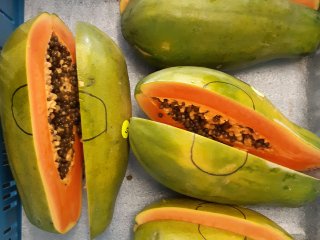
Research Results
Optimising the postharvest chain for papaya
Research work in the subproject ‘Optimisation of the tropical fruit supply chain’ aimed at achieving a good papaya quality for the consumer, while taking into account sustainability requirements. This topic is highly relevant for the shipment of ‘Tainung’ papaya from Brazil to the European market. Sea freight instead of air freight brings economic and environmental advantages. But at the same time the challenge and goal is to maintain papaya quality as high as possible.
About the research
The main points of attention for papaya quality are better control of the ripening, less water loss and mould reduction. In trials on site in Brazil, but also in shipments from Brazil to the Netherlands, tests were done with new technologies which are or will soon become commercially available. Both MA (Modified Atmosphere) packaging (PerfoTec) and the use of hypobaric storage chambers (RipeLocker) have given good results, especially on the control of ripening and reduction of water loss. Both technologies will be further optimised for papaya export.
Scientific innovations
Colour analysis and Near Infrared Spectroscopy have been explored as objective and non-destructive techniques for evaluation of papaya maturity and quality. The colour analysis by the ‘Smart Colour Inspector’ proved to be useful for external and internal colour analyses.
Relevance for the sector
It is essential that the long transport time from production site to the shelf in European supermarkets occurs at optimal conditions. First of all, maintaining the cold chain is of high importance. The further success of MA or hypobaric storage depends on the quality at harvest (low mould development risk). Under these conditions, both technologies are very promising to fulfil consumer demands and avoid product waste.
